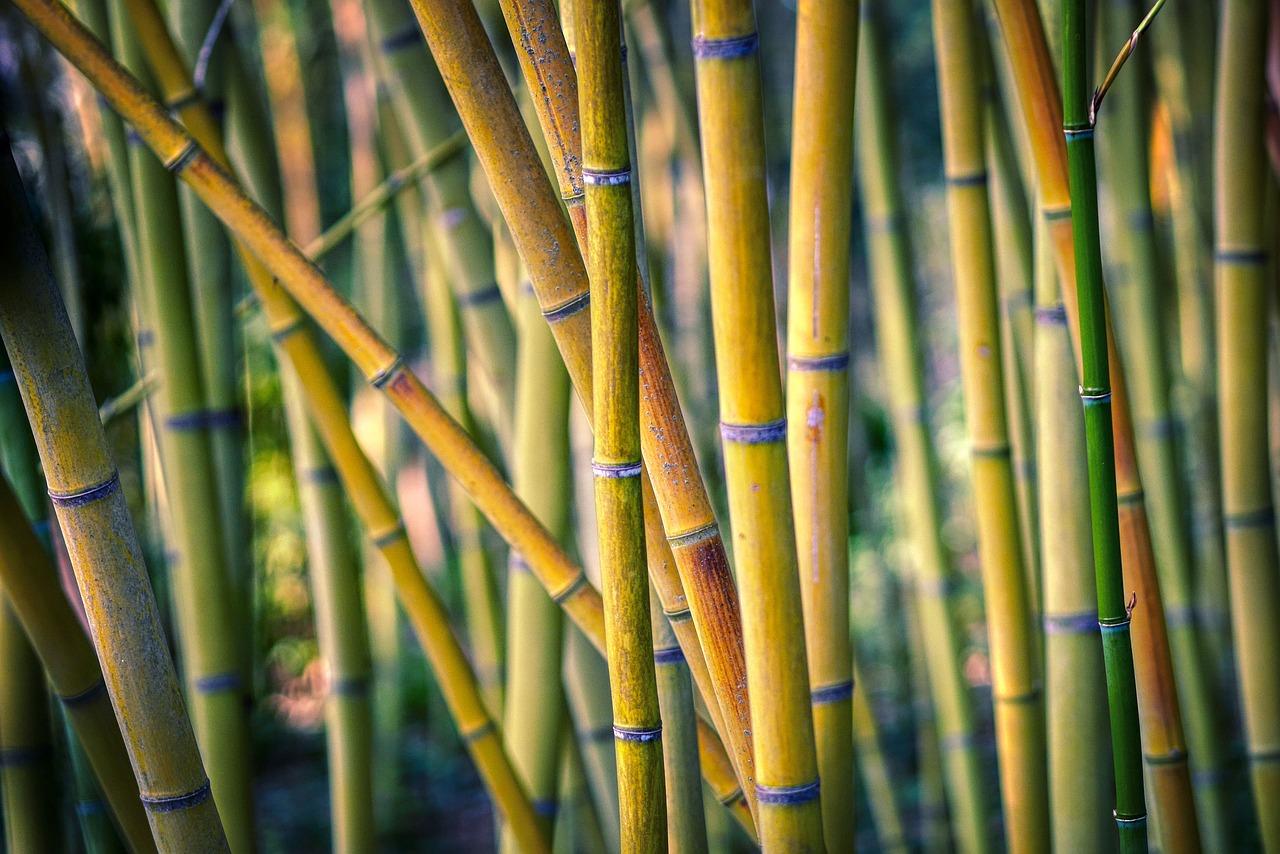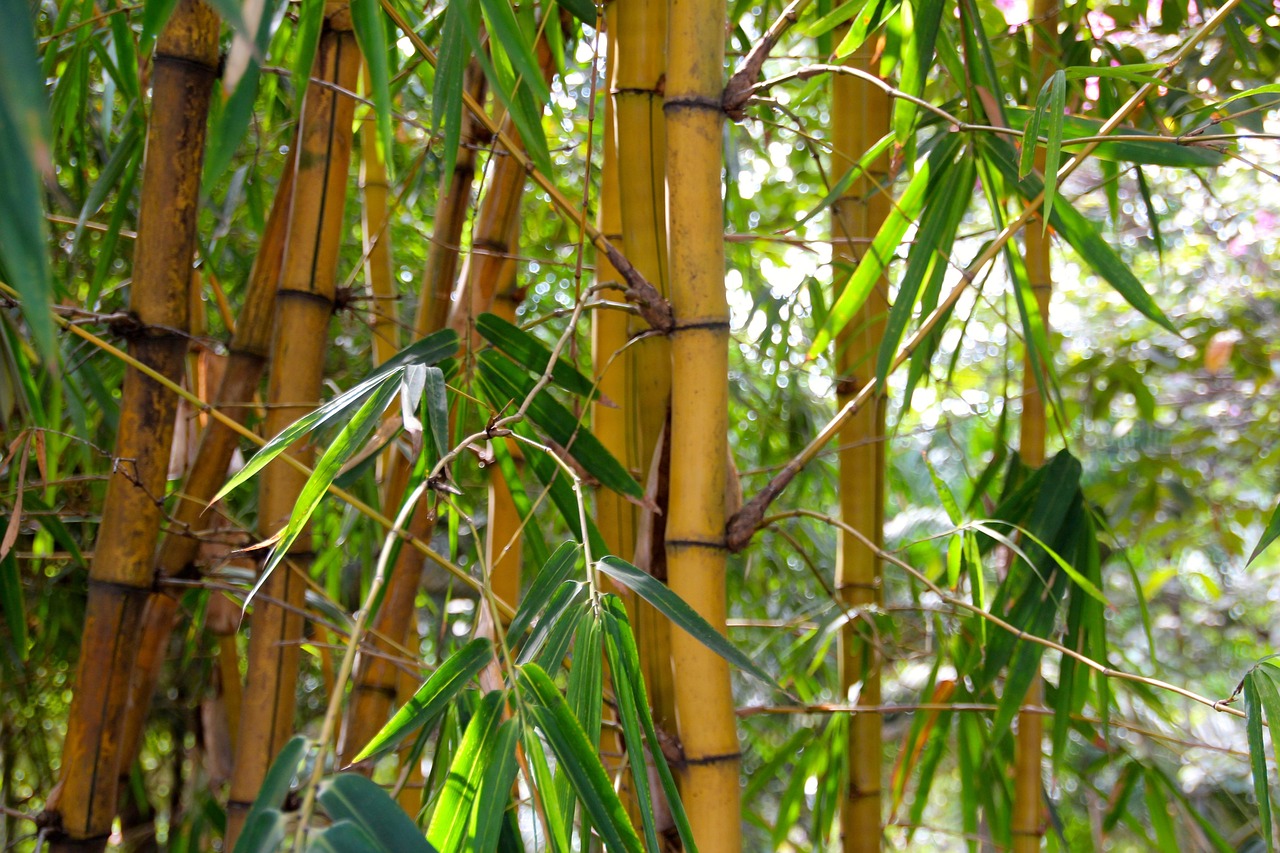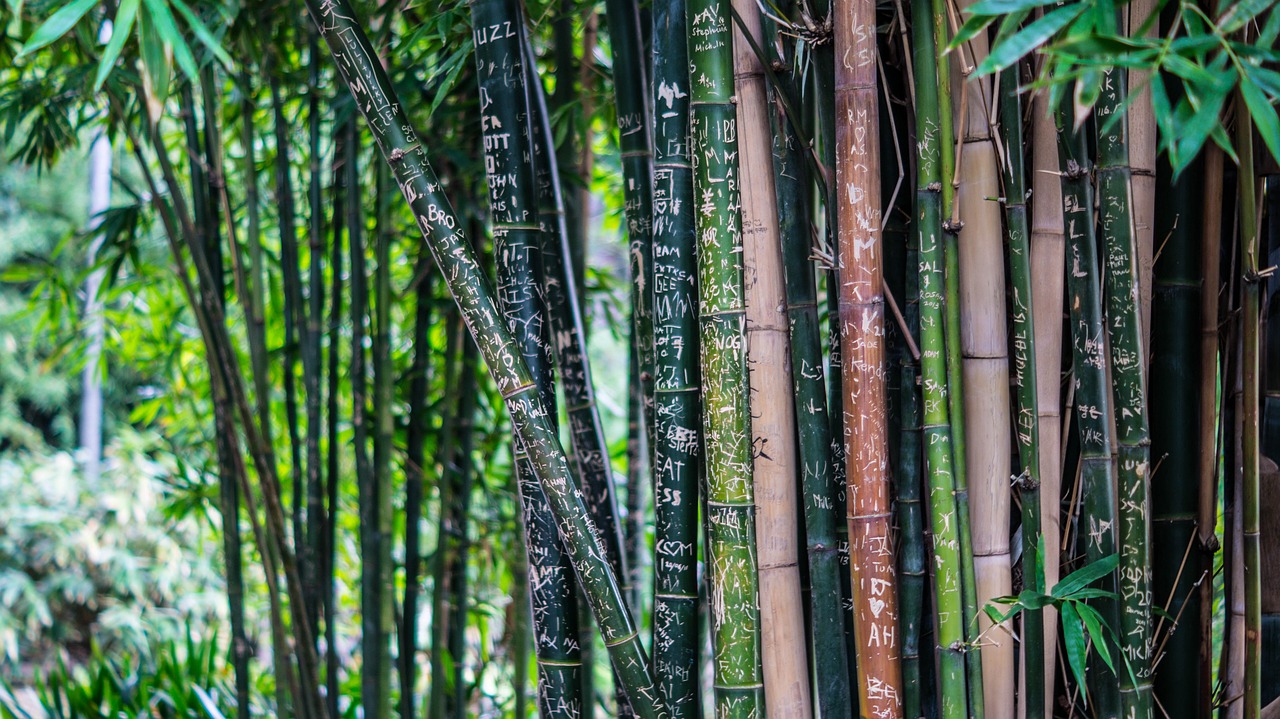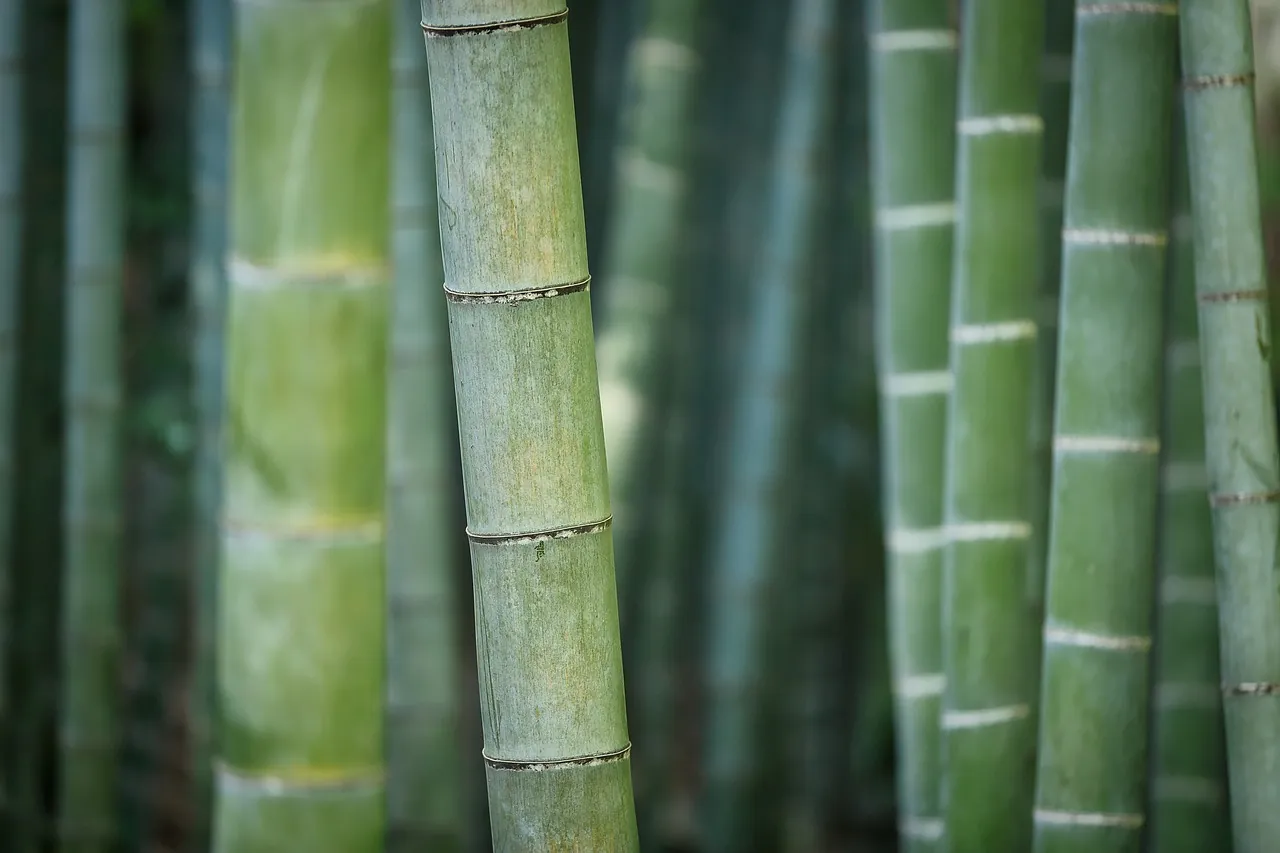Step into a world of tranquility and wonder at the Hokokuji Bamboo Forest, where towering stalks of bamboo create a mesmerizing canopy overhead. In this enchanting escape, the soft rustle of leaves and gentle whispers of the wind invite you to immerse yourself in nature’s masterpiece. As you explore, you’ll discover not only the forest’s breathtaking beauty but also the rich history and cultural significance woven into every stalk. Get ready to uncover the captivating secrets that make Hokokuji Bamboo Forest a must-visit destination!
A Glimpse into Hokokuji Bamboo Forest: Nature’s Masterpiece
Nestled in the heart of Kamakura, the Hokokuji Bamboo Forest stands as a breathtaking sanctuary that beckons nature enthusiasts and wanderers alike. This stunning locale boasts over 2,000 striking bamboo stalks, creating a mesmerizing green canopy that dances gracefully with the breeze. The tranquil ambiance ignites a sense of peace that feels almost otherworldly.
As you step into the Hokokuji Bamboo Forest, you’ll immediately notice:
- Serene Pathways: Winding trails invite you to explore every inch, offering a unique experience at each turn.
- Soothing Sounds: The rustling of bamboo leaves produces a gentle symphony, perfect for mindfulness and relaxation.
- Dappled Sunlight: Rays of sun filter through the towering stalks, creating ethereal patterns on the forest floor.
The forest is not just a visual feast but also a rich sensory experience. Here, you can feel the cool shade on warm days and support local conservation efforts by visiting, promoting sustainability in such a delicate ecosystem.
Don’t miss the opportunity to immerse yourself in one of Japan’s hidden treasures—Hokokuji Bamboo Forest truly is nature’s masterpiece, inviting adventurers to revel in its beauty and serenity.

The Allure of Bamboo: Why It Captivates All
Bamboo is an enchanting plant that captures the heart of anyone who encounters it, and the Hokokuji Bamboo Forest showcases this allure beautifully. From its towering stalks to its delicate rustle, bamboo provides a unique sensory experience. Here’s why bamboo captivates all:
- Versatility: Bamboo serves numerous purposes. From construction to musical instruments, its adaptability is truly remarkable.
- Aesthetic Appeal: The lush green hues and graceful sway of bamboo create a visually stunning landscape. The Hokokuji Bamboo Forest offers an enchanting backdrop for photography and meditation alike.
- Environmental Benefits: Bamboo thrives in various climates and is known for its fast growth. It absorbs more CO2 than trees, contributing to a healthier planet.
| Feature | Traditional Woods | Bamboo |
|---|---|---|
| Growth Rate | Slow | Rapid (up to 3ft/day) |
| CO2 Absorption | Moderate | High |
| Durability | Varies | Extremely durable |
Bamboo also holds deep cultural significance, especially in Japan. It symbolizes resilience, flexibility, and tranquility, making it an integral part of the Japanese aesthetic. As you wander through the Hokokuji Bamboo Forest, you’ll experience the magic of bamboo through its calming presence and vibrant beauty, leaving you enchanted and rejuvenated.
Immersing in Serenity: The Tranquility of the Forest
Step into the enchanting world of Hokokuji Bamboo Forest, where tranquility reigns supreme! As you wander through the lush green paths, listen closely — the gentle rustle of bamboo leaves creates a serene soundtrack, guiding you deeper into nature’s embrace. Here’s what to expect:
- Calming Atmosphere: The cool shade from the towering bamboo provides a soothing respite from the outside world. Feel your stress melt away as you inhale the fresh, crisp air filled with the earthy aroma of bamboo.
- Mindful Moments: Take a moment to meditate or practice mindfulness amid the ethereal beauty. This forest encourages you to connect with nature, allowing you to recharge and reflect.
- Breathtaking Views: With the sun filtering through the bamboo stalks, experience mesmerizing patterns of light and shadow. Each angle offers a new vista, making every step a unique discovery.
To further enhance your visit:
| Aspect | Experience |
|---|---|
| Sound | Whispering leaves |
| Sight | Towering bamboo |
| Smell | Fresh, earthy aroma |
| Feel | Cool, shaded paths |
The Hokokuji Bamboo Forest isn’t just a destination; it’s a sanctuary that invites you to immerse yourself in its idyllic serenity. Come discover the rejuvenating power of this magnificent forest!
A Stroll Through History: The Origins of Hokokuji
Every adventure into the Hokokuji Bamboo Forest is also a remarkable journey through time. Established in 1334, this serenity-infused haven belongs to the revered Hokokuji Temple, a Zen temple rooted in the Rinzai sect. The forest’s creation owes much to the temple’s founder, Ashikaga Yoshimasa, who envisioned a space where nature and spirituality intertwine harmoniously.
Walking through the Hokokuji Bamboo Forest, you’ll likely notice the stunning contrast of the towering bamboo stalks against the temple’s subtle architectural features. Here are some key historical highlights:
- Zen Influence: The forest reflects typical Zen principles, emphasizing simplicity and tranquility, encouraging visitors to meditate and find peace in nature.
- Cultural Milestones: The bamboo has served various purposes throughout the centuries—not just as a visually stunning backdrop but also as a resource for crafts, tools, and even culinary delights.
- Cultural Heritage: This forest symbolizes Japan’s deep reverence for nature. The bamboo represents strength, resilience, and flexibility—qualities admired in Japanese culture.
A visit to Hokokuji Bamboo Forest not only delights your eyes but also enriches your spirit with its historical and cultural significance. Let the whispers of the bamboo guide you through a beautiful tapestry woven with a rich past!

Photography Paradise: Capturing the Perfect Shot
Step into the mesmerizing world of the hokokuji bamboo forest, and you’ll discover a photographer’s dream backdrop! This enchanting setting offers countless opportunities to capture stunning shots that will leave everyone in awe. Here’s how to make the most of your photography adventure:
- Optimal Light: Visit during the golden hours—early morning or late afternoon. The sunlight filtering through the towering bamboo creates enchanting shadows and highlights.
- Composition Tips: Incorporate leading lines by positioning pathways or bamboo stalks to draw the viewer’s eye into the image. Experiment with depth by including nearby flora or inviting pathways in the foreground.
- Focus on Details: Don’t just shoot wide; zoom in on the intricate textures and unique features of bamboo leaves and shoots. Capture the contrast between the vibrant green and the soft earth tones.
- Play with Angles: Get creative! Shoot from low angles for a dramatic effect or try aerial shots to capture the forest’s vastness, especially with contrasting elements like streams or temple rooftops.
- Night Photography: Venture into the hokokuji bamboo forest at night. Using a tripod, you can capture the ethereal glow of the moonlight illuminating the bamboo.
Whether you’re an amateur or a seasoned pro, the hokokuji bamboo forest is a treasure trove for photography enthusiasts, offering endless opportunities to create breathtaking images.
Wildlife Wonders: Who Else Calls the Forest Home?
The Hokokuji Bamboo Forest is not just a sanctuary for stunning bamboo stalks; it also hosts a fascinating variety of wildlife! Within this serene setting, an array of animals thrives, adding to the forest’s enchanting atmosphere. Here are some of the remarkable creatures that you might encounter:
- Birds: Look upwards to spot colorful woodpeckers, cheerful Japanese white-eyes, and elegant green pigeons flitting through the tree canopy.
- Mammals: Keep an eye out for curious creatures like the Japanese black bear, although they’re often shy and prefer to stay hidden.
- Insects: Buzzing bees, dragonflies, and vibrant butterflies flit among the bamboo, playing a crucial role in pollination and adding bursts of color.
- Reptiles: Slithering snakes and swift lizards find refuge among the forest floor, blending seamlessly with their surroundings.
| Wildlife Type | Examples | Best Time to Spot |
|---|---|---|
| Birds | Japanese white-eye, woodpecker | Early morning |
| Mammals | Japanese black bear | Dusk and dawn |
| Insects | Butterflies, dragonflies | Late spring & summer |
| Reptiles | Snakes, lizards | Warm months |
Wandering through the Hokokuji Bamboo Forest, you’ll be immersed in a world where the magic of nature unfolds, reminding us just how interconnected and vibrant our ecosystem truly is. So, keep your eyes peeled and your camera ready!
Visiting Tips: Making the Most of Your Trip
Planning your visit to the hokokuji bamboo forest? Here are some enthusiastic tips to enhance your experience:
- Best Time to Visit: Early mornings or late afternoons offer the best light for photography and a more serene atmosphere. Aim for weekdays to avoid the crowds.
- Dress Comfortably: Wear suitable shoes and clothing for walking. The forest has various trails, and you want to enjoy every step!
- Stay Hydrated: Bring a water bottle. Exploring the hokokuji bamboo forest can lead you on longer treks than anticipated.
- Capture the Moment: Don’t forget your camera! The interplay of light through the bamboo is breathtaking. Look for unique angles and consider using a tripod for stability.
- Respect Nature: Stay on designated trails. Protect the delicate ecosystem and ensure the beauty for future visitors.
- Combine Your Visit: Make a day of it by checking out nearby attractions. The peaceful temple of Hokokuji is just a stone’s throw away!
- Embrace Tranquility: Consider bringing along a journal or sketchbook—write or draw while basking in the calming nature of the hokokuji bamboo forest. This forest serves as the perfect backdrop for inspiration.
By following these tips, you’ll make the most of your trip to the enchanting hokokuji bamboo forest and create unforgettable memories!

Seasons of Beauty: When to Visit for the Best Experience
Experience the enchanting hokokuji bamboo forest throughout the year, as each season presents its own unique charm. While the forest captivates visitors in any weather, certain times truly stand out. Here’s a seasonal breakdown to help you pick the perfect time for your visit!
- Spring (March – May):
- Highlights: Fresh green shoots, blooming cherry blossoms.
- Why Visit?: The vibrant hues of new bamboo paired with the ephemeral beauty of sakura create an unforgettable backdrop.
- Summer (June – August):
- Highlights: Lush, dense foliage, cooler temperatures under the bamboo canopy.
- Why Visit?: Escape the heat as the hokokuji bamboo forest provides a refreshing oasis. Early mornings and late afternoons are ideal for serene strolls.
- Autumn (September – November):
- Highlights: Golden leaves combined with the bamboo’s rich green.
- Why Visit?: Enjoy the breathtaking contrast of colors and the quieter atmosphere, perfect for reflection and photography.
- Winter (December – February):
- Highlights: Unique frost-kissed bamboo, tranquil silence.
- Why Visit?: Visit for a serene experience. With fewer crowds, you can soak in the peaceful ambiance.
In summary, the hokokuji bamboo forest enchants differently with each passing season. Plan your visit accordingly and immerse yourself in the breathtaking beauty of this nature’s masterpiece!
Cultural Significance: Bamboo in Japanese Tradition
The hokokuji bamboo forest stands not only as a beautiful natural site but also as a symbol deeply rooted in Japanese culture. Bamboo, known as “take” in Japanese, showcases a rich tapestry of meanings that resonate throughout the nation. Here’s why bamboo captures the hearts of many:
- Symbol of Resilience: Bamboo thrives in even the harshest conditions, representing strength and flexibility. Japanese people admire its ability to bend without breaking, reflecting perseverance in the face of adversity.
- Connection to Nature: Revered in Shintoism, bamboo signifies purity and the natural world. The gentle rustling of bamboo leaves often evokes a spiritual connection, incorporating meditation and mindfulness into Japanese traditions.
- Artistic Influence: Bamboo craftsmanship is an art form in Japan. From fragile weavings to sturdy furniture, artisans utilize bamboo to create both functional and aesthetic pieces, showcasing its versatility.
- Seasonal Celebrations: During festivals such as Tanabata, bamboo decorations, known as “tanzaku,” hold written wishes and prayers. This tradition illustrates the plant’s role in expressing hopes and dreams.
The hokokuji bamboo forest not only enchants visitors with its beauty but also invites you into the fascinating cultural realm that bamboo represents. As you wander through this stunning locale, take a moment to appreciate the rich heritage intertwined with every stalk.
Nearby Attractions: Exploring Kamakura Beyond the Forest
While the Hokokuji Bamboo Forest enchants visitors with its lush greenery and serene pathways, Kamakura is bursting with more treasures just waiting to be explored. After indulging in the tranquility of the bamboo groves, venture out to discover some of the area’s captivating attractions!
Top Nearby Attractions:
- Hase-dera Temple
A short distance from the bamboo forest, this temple boasts the stunning Kannon statue and breathtaking ocean views. The gardens here are as mesmerizing as the Hokokuji Bamboo Forest. - Great Buddha of Kamakura (Daibutsu)
Standing tall since the 13th century, this iconic bronze statue invites curious souls to marvel at its grandeur. Combine your visit with the serene vibes of the bamboo forest for a fulfilling day. - Kamakura Beach
If you crave some sun and surf, head to Kamakura Beach! Relax or enjoy activities, enjoying a contrast to the peaceful ambiance of the Hokokuji Bamboo Forest. - Engaku-ji Temple
Another cultural gem, this temple offers a quiet escape with exquisite Zen gardens that echo the tranquility found in the bamboo forest.
Why Explore These Attractions?
Combining these experiences with your visit to the Hokokuji Bamboo Forest allows you to appreciate Kamakura’s rich history and natural beauty! Each site complements the serenity of the forest, making your trip truly unforgettable.

Unforgettable Memories: Share Your Adventure
Your visit to the hokokuji bamboo forest is not just an escape into nature; it’s an experience that will etch itself into your memory. After immersing yourself in the serene beauty of towering bamboo stalks, capture these unforgettable moments and share them with others! Here’s how to make your memories even more special:
- Photography Tips: Take plenty of photos to remember the majesty of the hokokuji bamboo forest. Play with different angles to capture the light filtering through the leaves. Plus, selfies with the lush backdrop are always a hit!
- Journal Your Journey: Document your thoughts and feelings after each visit. Reflect on how the tranquility of the hokokuji bamboo forest affected you. This personal touch will create lasting memories.
- Social Media Sharing: Post your best pictures on social media with captions that express your wonder. Use hashtags like #HokokujiBambooForest and #NatureEscape to connect with fellow nature lovers.
- Engage with Fellow Visitors: Strike up a conversation with other travelers you meet. Share stories and tips; you might discover even more hidden gems in and around the hokokuji bamboo forest!
Remember, your adventure is unique! By sharing your experiences, you not only keep the magic alive for yourself but also inspire others to embark on their own unforgettable journey.
Frequently Asked Questions
What is the best time to visit Hokokuji Bamboo Forest?
The ideal time to visit the Hokokuji Bamboo Forest is during the early morning or late afternoon. At these times, you’ll find less crowds and the soft, diffused light enhances the ethereal beauty of the bamboo stalks. Additionally, visiting in the spring, especially during April when cherry blossoms are in bloom, adds an extra magical touch to your experience, making the forest a truly enchanting escape.
Are there any entrance fees to access the Hokokuji Bamboo Forest?
Yes, there is a modest entrance fee for accessing the Hokokuji Bamboo Forest. The fee is typically around 200 yen, which is roughly $2 USD. This small charge helps support the maintenance and preservation of the forest, ensuring it remains beautiful and accessible for future visitors. Don’t forget to bring some cash, as there may not be an option for card payments at the entrance!
What should I wear when visiting Hokokuji Bamboo Forest?
When visiting the Hokokuji Bamboo Forest, it’s best to wear comfortable clothing and sturdy shoes. The terrain can be uneven, so a pair of good walking shoes is highly recommended. Also, consider layering your clothes as the temperature can vary throughout the day. If you’re visiting during the warmer months, don’t forget a hat and sunscreen to protect yourself from the sun while exploring this serene location!
Can I take photographs in the Hokokuji Bamboo Forest?
Absolutely! The Hokokuji Bamboo Forest is a photographer’s dream come true, with its towering bamboo stalks creating a stunning backdrop for both professional and amateur photographers. You’ll want to capture the mesmerizing light filtering through the leaves. Just be courteous of other visitors and maintain a sense of tranquility while snapping those picturesque moments!
Are there guided tours available for the Hokokuji Bamboo Forest?
Yes, there are guided tours available that enhance your experience in the Hokokuji Bamboo Forest. These knowledgeable guides share fascinating insights into the history and ecology of the bamboo forest, helping you appreciate its enchanting beauty even more. Tour options may vary, so it’s recommended to check in advance for availability and to see if they provide special experiences such as meditation sessions or cultural activities.
